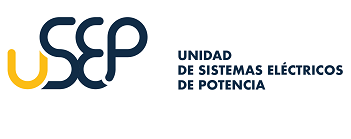CIEMAT. Madrid (Spain)
If you want to receive news about energy storage, please send us your inscription here.
EDITIONS
2015: Principles of energy storage, CIEMAT. 16th - 20th November 2015, Madrid (Spain).
2017: Principles of energy storage, CIEMAT. 2nd - 6th October 2017, Madrid (Spain).
2018: Applications of Energy Storage to Power Systems, CIEMAT. 19th - 23th November 2018, Madrid (Spain).
- Category: Renewable Energy
- Modality: Face-To-Face
- Price: 650 euros
- Phone number: +34913466748
- Inscription:
- More information (pdf)
(click on course title for visit the official course website)
HIGHLIGHTS
- Overview of Energy Storage Technologies
- Environmental and Safety Aspects
- Storage in Hydrogen and Hydrides
- Electrochemical Storage (Batteries)
- Thermal Storage
- Compressed Air Energy Storage (CAES)
- Hydro Pumped Storage
- Kinetic Energy Storage (Flywheels)
- Superconducting Magnet Energy Storage (SMES)
- Energy Storage with Supercapacitors
- Grid Integration of Energy Storage Technologies
Complete Course Duration: 30 hours
DESCRIPTION
Energy Storage is becoming a powerful tool for energy management, since it allows decoupling generation from consumption, performing both under the best conditions or efficiency and cost. The different technologies of energy storage, some competitors, some complementary, being at different stage of development, aim at becoming solutions at different power scales to modify the energy production/consumption scenario.
The goal of this course is to provide a review of the different existing technologies, their present situation and their particular applications, either from a theoretical and a practical approach with demonstrations at the laboratory and examples with a simulation tool for a better understanding of their fundamentals and operation, which provides a distinguishing character to the course. Grid connection schemes and potential effects in it will be also analysed. Furthermore, the course will be also complemented with an introduction to environmental and safety issues. Main factors, which affect their development and implementation such as regulatory, market and environmental aspects, will be finally considered.
The course will review the following technologies:
- Chemical Storage in Hydrogen: Gas, liquid and solid states as well as components with a high content of hydrogen (ammonia, methane, methanol or methanoic acid) will be considered as suitable system for hydrogen storage in moving or stationary sources.
- Chemical Accumulators (Batteries): They store energy in chemical form and presently they are the most widely used systems in most industrial, transportation or renewable energy generation sectors.
- Thermal Storage: Its high capacity allows considering some renewable energies and particularly concentrated solar energy, as manageable within the present energy production scheme.
- Compressed Air and Hydro Pumping: They represent massive storage systems that have been used for many years, although there is still space for new developments aimed at increasing their present efficiency.
- Fast Energy Storage Systems: With applications where a fast response is critical by themselves or in combination with other technologies. They include storage in Superconducting Magnets, Flywheels and Supercapacitors.
COURSE AIMED AT
Professionals in the energy sector who want to learn about energy storage technologies, specially their practical and operation details. The course may also be of interest for people working in institutions related to teaching or researching in this area.
METHODOLOGY
The course will review the fundamentals, technologies and applications of the different technologies of energy storage in one part of lectures based on presentations. The distinguishing character of this course is that comprises some visits to the CIEMAT laboratories to complement the theoretical explanations with practical demonstrations of most of the technologies covered. Moreover, some examples run in practical sesions with simulation will help to understand the particular characteristics of the storage alternatives and their operation when connected to the electric grid.
CONTENTS
- Introduction:
- Description of Energy Storage System and their applications.
- Environmental and Safety Aspects:
- Impacts, challenges and security issues
- Grid connection of different technologies:
- Frequency and voltage regulation / Power electronics / Hybrid energy storage / Control strategies
- Storage in Hydrogen:
- Liquid & Gas H2; Solid H2; Storage in Metal Hydride; Carbon Materials; Solid Fuels with high H2 content; Ammonia; Methane and other Organic Compounds.
- Electrochemical Storage:
- Batteries: Lead Acid; Lithium-ion; Alkaline; Redox-Flow; Laboratory Demonstration
- Thermal Storage:
- Thermal storage in solar concentration plants.
- Compressed Air (CAES) and Hydro Pumped Storage:
- CAES: Fundamentals; Basic parts; Technologies; Commercial applications.
- Hydro Pumped Storage: Fundamentals; Basic Parts; Technologies; Commercial Applications; Computer Simulation.
- Fast Energy Storage Systems:
- Superconducting Magnets Energy Storage (SMES), Flywheels an Supercapacitors: Fundamentals; Basic Parts; Technologies; Commercial Applications; Laboratory Demonstration.
DIRECTION & COORDINATION
Direction: Dr. Marcos Lafoz . CIEMAT Division of Electric Engineering
Coordination: Mirian Bravo Taranilla. CIEMAT Training Unit
DOCUMENTATION & CERTIFICATION
Technical documentation will be provided to the attendants as well as a Certificate of Assistance.
ADDITIONAL INFORMATION
Training in Energy and Environment:
Mirian Bravo: mirian.bravo@ciemat.es (www.ciemat.es)
Phone: +913466748/6295 ;Fax: 913466297
Division of Electric Engineering:
Dr. Marcos Lafoz: marcos.lafoz@ciemat.es (http://rdgroups.ciemat.es/web/acepo)
VENUE & SCHEDULE
CIEMAT. Av. Complutense 40, Madrid (España)
Lun, Mar, Jue: From 9:00h to 18:00h;
Mie: From 9:00h to 19:30h;
Vie: From 9:00h to 15:00h
